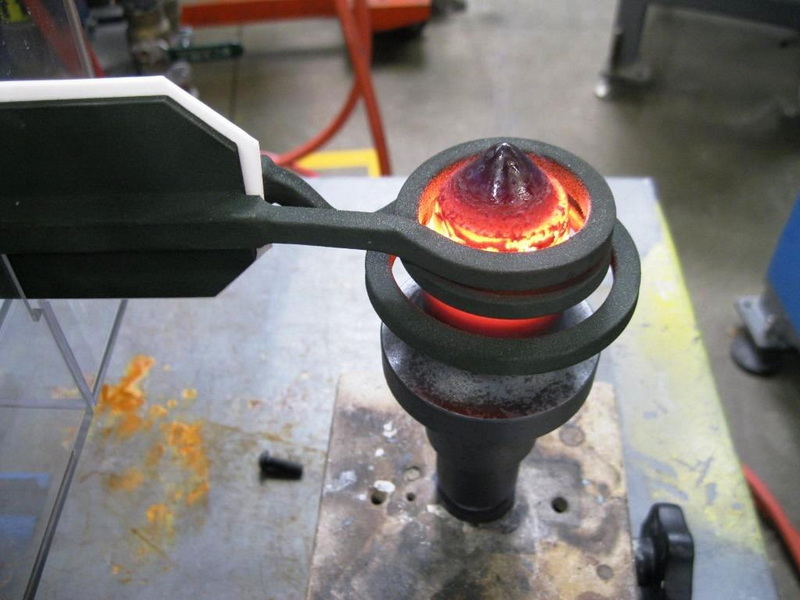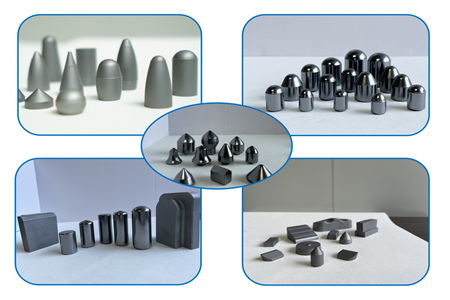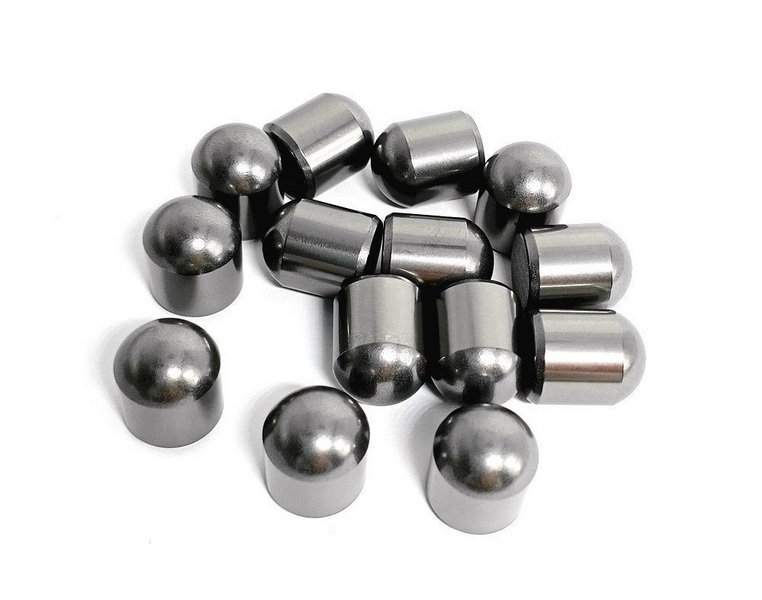Content Menu
● Understanding Tungsten Carbide and Its Bonding Challenges
● Why Soldering Tungsten Carbide Is Challenging
● Common Materials Tungsten Carbide Can Be Soldered or Brazed To
>> 1. Steel
>> 2. Copper and Copper Alloys
>> 3. Nickel and Nickel Alloys
>> 4. Other Carbide Materials
>> 5. Specialty Alloys and Composites
● Brazing vs. Soldering: Which Is Used for Tungsten Carbide?
● Key Steps in Soldering/Brazing Tungsten Carbide
● Advanced Techniques for Joining Tungsten Carbide
● Managing Stresses and Ensuring Joint Quality
● Applications of Brazed Tungsten Carbide Joints
● Recent Advances and Innovations in Tungsten Carbide Joining
>> Active Brazing Alloys
>> Nano-Engineered Interfaces
>> Automated and Robotic Brazing
>> Environmentally Friendly Fluxes and Alloys
● Practical Tips for Successful Tungsten Carbide Soldering and Brazing
● Troubleshooting Common Problems
● Environmental and Safety Considerations
● Future Trends in Tungsten Carbide Joining
● Conclusion
● FAQ: Tungsten Carbide Soldering and Brazing
>> 1. What is the best method for cleaning tungsten carbide before brazing?
>> 2. How do I choose the right brazing alloy for tungsten carbide?
>> 3. What are the common issues encountered during the brazing of tungsten carbide?
>> 4. Can I use a standard soldering iron for tungsten carbide?
>> 5. How do I inspect the quality of a brazed tungsten carbide joint?
Tungsten carbide is celebrated for its extraordinary hardness, wear resistance, and high melting point, making it indispensable in industries such as machining, mining, aerospace, and electronics. However, joining tungsten carbide to other materials—especially by soldering or brazing—poses unique challenges due to its ceramic-like structure and the presence of metallic binders. This comprehensive guide explores in depth what materials tungsten carbide can be soldered or brazed to, the science and techniques behind these processes, practical considerations for achieving robust joints, and the latest advancements in the field.

Understanding Tungsten Carbide and Its Bonding Challenges
Tungsten carbide is a composite material, typically composed of hard tungsten carbide grains cemented together with a metallic binder such as cobalt or nickel. This unique structure imparts both high hardness and a degree of toughness, but also makes the material difficult to wet and bond with conventional solders. The non-metallic nature of the carbide phase and the presence of binders can inhibit the flow of solder alloys, making specialized techniques and materials necessary for successful joining.
Why Soldering Tungsten Carbide Is Challenging
- Low Thermal Conductivity: Tungsten carbide does not conduct heat as efficiently as metals, leading to uneven heating and potential thermal stress.
- Wetting Issues: Solder alloys often struggle to adhere to tungsten carbide surfaces, especially if the binder inhibits wetting.
- Thermal Expansion Mismatch: Differences in expansion rates between tungsten carbide and other materials can cause residual stresses and cracking during cooling.
- High Melting Point: The high melting point of tungsten carbide requires the use of high-temperature brazing rather than traditional low-temperature soldering.
These challenges necessitate careful selection of joining methods, alloys, and process parameters to ensure strong, durable bonds.
Common Materials Tungsten Carbide Can Be Soldered or Brazed To
1. Steel
Steel is one of the most common substrates for tungsten carbide brazing, especially in the manufacturing of cutting tools and wear parts. The process typically involves:
- Using silver-based brazing alloys (e.g., BAg-3 or BAg-24) that provide good wetting and strength.
- Employing flux to clean the surfaces and promote bonding.
- Induction or furnace heating for uniform temperature distribution.
Example Application:
- Carbide tips are brazed onto steel shanks for drill bits, saw blades, and industrial cutters.
2. Copper and Copper Alloys
Copper and its alloys are used in electrical contacts and components where good conductivity is required. Brazing tungsten carbide to copper involves:
- Using silver-copper brazing alloys, often with high silver content for better wetting.
- Cleaning surfaces thoroughly to remove oxides and contaminants.
- Performing the process in a vacuum or under a protective atmosphere to prevent oxidation.
Example Application:
- Electrical contacts in vacuum switch tubes, where reliable, high-strength joints are essential.
3. Nickel and Nickel Alloys
Nickel is sometimes used as a binder in tungsten carbide composites and as a substrate material. Nickel's compatibility with tungsten carbide allows for strong metallurgical bonds:
- Nickel-bonded tungsten carbide can be brazed to steel, copper, or other nickel alloys.
- The process offers excellent corrosion resistance and is suitable for harsh environments.
Example Application:
- Mechanical seal faces in pumps and compressors, where durability and chemical resistance are required.
4. Other Carbide Materials
Tungsten carbide can be joined to other carbides, such as titanium carbide or silicon carbide, using specialized high-temperature brazing techniques. These joints are less common but are used in advanced engineering applications where extreme hardness and wear resistance are required.
5. Specialty Alloys and Composites
In some cases, tungsten carbide is brazed to specialty alloys (such as certain stainless steels or superalloys) for use in aerospace, mining, or oil and gas industries. The selection of the brazing alloy and process parameters is critical to ensure joint integrity and performance under demanding conditions.
Brazing vs. Soldering: Which Is Used for Tungsten Carbide?
While "soldering" typically refers to joining at temperatures below 450°C, tungsten carbide is almost always joined using brazing, which occurs at higher temperatures and produces much stronger joints. Brazing alloys, especially those based on silver, are favored for their ability to wet tungsten carbide and form durable bonds.
Key Steps in Soldering/Brazing Tungsten Carbide
1. Surface Preparation: Clean all surfaces thoroughly, using grinding, chemical cleaning, or ultrasonic cleaning to remove oils, oxides, and contaminants.
2. Joint Design: Design joints to minimize stress concentrations and allow for even distribution of thermal expansion.
3. Brazing Alloy Selection: Choose alloys compatible with both tungsten carbide and the substrate (commonly silver-based, sometimes with nickel or copper).
4. Heating Method: Use controlled heating (induction, furnace, or laser) to ensure uniform temperature and avoid thermal shock.
5. Cooling: Allow the assembly to cool slowly to reduce residual stresses and prevent cracking.
6. Inspection: Check for cracks, voids, and proper wetting of the joint area.
Advanced Techniques for Joining Tungsten Carbide
- Vacuum Brazing: Performed in a vacuum to prevent oxidation and contamination, yielding very clean, strong joints.
- Fluxless Brazing: Utilizes controlled atmospheres or vacuum to eliminate the need for flux, reducing contamination and improving joint strength.
- Laser Brazing: Provides precise, localized heating, ideal for small or intricate components and for minimizing thermal distortion.
- Active Metal Brazing: Involves using alloys containing elements like titanium or zirconium, which can react with the carbide surface to enhance wetting and adhesion, especially useful for joining to ceramics or other difficult substrates.
Managing Stresses and Ensuring Joint Quality
- Slow Cooling: Prevents thermal shock and cracking by allowing the materials to contract gradually.
- Compressive Joint Design: Placing carbide in a pocket or under compression during cooling helps avoid tensile stresses that can lead to failure.
- Post-Braze Inspection: Use visual, mechanical, or non-destructive testing to ensure joint integrity and identify any hidden flaws.
Applications of Brazed Tungsten Carbide Joints
- Cutting Tools: Drill bits, saw blades, and milling cutters rely on the hardness and wear resistance of tungsten carbide tips brazed to steel bodies.
- Wear Parts: Pump components, valve seats, and mining tools use brazed carbide for extended service life in abrasive environments.
- Electrical Contacts: High-performance switches and relays employ brazed tungsten carbide-copper contacts for durability and conductivity.
- Aerospace Components: High-strength, wear-resistant assemblies in aircraft and spacecraft often utilize brazed tungsten carbide joints for reliability under extreme conditions.

Recent Advances and Innovations in Tungsten Carbide Joining
Active Brazing Alloys
Active brazing alloys, containing elements such as titanium, vanadium, or zirconium, have revolutionized the joining of tungsten carbide to ceramics and other non-metallic materials. These elements react with the carbide surface to form strong chemical bonds, improving wetting and joint strength without the need for flux.
Nano-Engineered Interfaces
Recent research has focused on engineering the interface between tungsten carbide and the substrate at the nanoscale. By controlling grain size, binder distribution, and alloy composition, manufacturers can achieve joints with enhanced toughness, reduced residual stress, and improved resistance to thermal cycling.
Automated and Robotic Brazing
The use of robotics and automation in brazing processes ensures consistent quality, precise temperature control, and repeatable results, especially important in high-volume manufacturing of cutting tools and industrial components.
Environmentally Friendly Fluxes and Alloys
With increasing environmental regulations, there is a shift toward the use of fluxes and brazing alloys that minimize toxic byproducts and hazardous waste. Lead-free and cadmium-free alloys are now widely available, offering safer alternatives without compromising joint performance.
Practical Tips for Successful Tungsten Carbide Soldering and Brazing
- Preheat Components: Gradually preheating both the tungsten carbide and the substrate reduces thermal shock and helps achieve uniform temperature distribution.
- Use Appropriate Fixturing: Secure the parts firmly during brazing to maintain alignment and prevent movement as the alloy flows and solidifies.
- Control Atmosphere: When possible, perform brazing in a vacuum or inert gas atmosphere to prevent oxidation and contamination.
- Select the Right Filler Metal: Always match the filler metal to both the carbide and substrate materials for optimal strength and compatibility.
- Monitor Joint Thickness: An excessively thick or thin brazing layer can compromise joint strength; aim for a uniform, controlled thickness.
Troubleshooting Common Problems
- Poor Wetting: If the alloy does not flow or adhere properly, check for surface contamination, improper alloy selection, or insufficient temperature.
- Cracking: Rapid cooling or a poor match in thermal expansion coefficients can cause cracks; slow down the cooling rate and consider using a more compatible alloy.
- Porosity: Gas entrapment or contamination can lead to porous joints; use clean materials, proper flux, and a controlled atmosphere to minimize this issue.
- Weak Joints: Inadequate alloy flow, improper surface preparation, or insufficient heating can result in weak bonds; review each step and adjust as necessary.
Environmental and Safety Considerations
When soldering or brazing tungsten carbide, safety and environmental protection are paramount. Always use appropriate personal protective equipment, such as gloves, goggles, and ventilation, especially when handling fluxes or high-temperature equipment. Dispose of waste materials responsibly, and select environmentally friendly alloys and fluxes whenever possible.
Future Trends in Tungsten Carbide Joining
The future of tungsten carbide joining lies in the development of even more advanced alloys, improved automation, and the integration of digital monitoring systems for real-time quality control. As industries demand higher performance and reliability, ongoing research will continue to push the boundaries of what is possible in joining this remarkable material to a growing range of substrates.
Conclusion
Tungsten carbide can be reliably soldered or, more commonly, brazed to a variety of materials including steel, copper, nickel, and certain specialty alloys. The success of these joints depends on careful surface preparation, selection of suitable brazing alloys (often silver-based), and meticulous control of heating and cooling processes. Advanced techniques such as vacuum, laser, and active metal brazing further expand the possibilities for joining tungsten carbide to challenging substrates. These robust joints enable the use of tungsten carbide in demanding industrial applications where wear resistance, strength, and reliability are paramount. As technology evolves, so too do the methods and materials for joining tungsten carbide, ensuring its continued role at the forefront of modern engineering.

FAQ: Tungsten Carbide Soldering and Brazing
1. What is the best method for cleaning tungsten carbide before brazing?
Surface preparation is crucial. Mechanical grinding or chemical cleaning (using a mixture of nitric and hydrofluoric acids, or alcohol for copper-tungsten contacts) removes contaminants and oxides. Ultrasonic cleaning may also be used for precision components.
2. How do I choose the right brazing alloy for tungsten carbide?
Select a brazing alloy that offers good wetting and strength for both the carbide and the substrate. Silver-based alloys (such as BAg-3 or BAg-24) are widely used. For copper or copper-tungsten contacts, a high-silver, silver-copper alloy is preferred.
3. What are the common issues encountered during the brazing of tungsten carbide?
Typical challenges include poor wetting, cracking due to thermal stresses, and joint failure caused by improper alloy selection or rapid cooling. These can be mitigated by proper joint design, slow cooling, and using appropriate brazing alloys.
4. Can I use a standard soldering iron for tungsten carbide?
No. The high temperatures required for effective joining of tungsten carbide exceed the capabilities of standard soldering irons. Brazing, which uses temperatures above 450°C, is necessary for strong, reliable joints.
5. How do I inspect the quality of a brazed tungsten carbide joint?
Inspection involves checking for visible cracks, ensuring the brazing alloy has fully wetted the carbide surface, and performing mechanical tests to verify joint strength. Non-destructive testing methods such as ultrasonic or X-ray inspection may be used for critical applications.
















